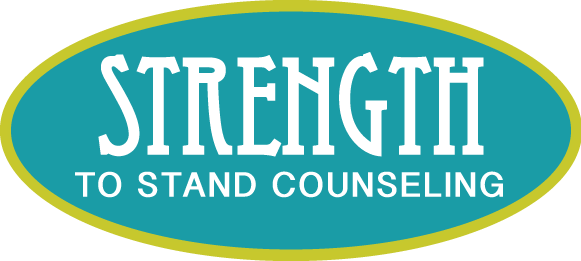Black Maternal Mental Health Week
April 11-17, 2023
Black Maternal Mental Health Week is now recognized by the United States government. Black maternal mortality and morbidity have reached crisis level. The numbers from 2021 show that 68.9/100,000 black women die from pregnancy or postpartum complications. This number is nearly 3 times higher than for non-Hispanic white women. In the St. Louis area, that number is 4 times greater.
The news media has latched on to the tragic story out of Duxbury Massachusetts on January 24. 2023. Lindsay Clancy, 32-year-old white, married, employed woman living in a wealthy community on Cape Cod, strangled her three small children and then attempted suicide. She had lots of family support but was struggling. She was a Labor and Delivery nurse who had not returned to work yet after delivering her last baby 8 months ago. Lindsay was struggling with postpartum depression and anxiety and sought help for months. She was given many medications and had an inpatient behavioral health admission a few weeks before the death of her children. Lindsay likely was suffering from postpartum psychosis. She remains hospitalized, paralyzed from her suicide attempt and is awaiting her next court date on May 2, 2023. Since this event, the level of awareness of postpartum mental conditions has risen. As a mental health professional and maternal health advocate, that should be encouraging. However, the 3 beautiful Clancy children are only 3 of the 10 children to die at the hands of their postpartum mother in the last 6 months.
In the fall of 2022, I remember hearing about Erin Merdy, 30-year-old, black, single mother of 3 in Coney Island. Reports were that she was in an ongoing custody battle, had some allegations regarding neglect and was facing eviction. She was found on a beach September 12, 2022, in a near catatonic state after drowning her 3 children. Erin currently remains incarcerated with a likely diagnosis of postpartum psychosis. Erin’s three children bring the total to 6 kids. Where are the other 4?
As I was doing research for this blog, I came across the story of Paulesha Green-Pulliam. I had no awareness of this sad story. Paulesha is a 34-year-old, black, single mother with 2 girls (5 and 22 months) living in Hunters Point, a predominantly black neighborhood in the San Francisco area. On December 23, 2022, her children were found suffocated and lying a closet with ultrasound photos of their baby brother that had died at birth a few months prior. There are reports that Paulesha also attempted suicide. A boyfriend reported that Paulesha had fears that her girls were going to be sex trafficked and she killed them instead. It has not been revealed if this was auditory hallucinations. But again, likely a result of postpartum psychosis.
Lastly, on November 28, 2022, Dimone Fleming, 22, single black female in New York City stabbed her 2 young sons while living in an apartment at a homeless shelter. Reportedly she had fears that her children were possessed by demons. She was found very irrational and erratic and was hospitalized. Postpartum psychosis is being considered for Dimone as well. This totals 10 children that we are aware of. It was not until I researched Paulesha that I heard Dimone’s name and her story for the first time.
My point is this- why are we inundated with the Lindsay Clancy story and not these others? Some may argue that Lindsay Clancy was not “at risk” for postpartum psychosis and therefore argue that the other women were more “at risk.” But is that true? Postpartum Support International (PSI) lists the following as increased risk for postpartum psychosis: First baby, neonatal or perinatal loss, obstetric complications, a family or personal history of psychosis, a personal or family history of bipolar disorder and sleep deprivation. We do not know the “ins and outs” of each of these women’s pasts, deliveries, sleep hygiene etc. But are we explaining away Dimone, Paulesha and Erin because it “makes more sense” because they are black, single, and were struggling with things like finances, custody, etc.? Perinatal mood and anxiety disorders and even the most severe, postpartum psychosis can happen and do happen to anyone, it does not discriminate. Therefore, we should not either. However, we are often quick to say “oh well, she was living in poverty, she was facing eviction, or she was in a homeless shelter apartment.” Every single one of these women expressed some concerning thoughts or were displaying concerning behaviors. It is always easy to look back in retrospect and recognize warning signs. But we must get better about LISTENING.
Many black women that were “near miss” cases during labor, delivery and postpartum recovery report not feeling listened to. This is the first and most important step, we must listen to women. We must listen no matter their race, socioeconomic status, marital status, living situation. We must provide a safe listening space. Hallucinations and delusions are signs of postpartum psychosis- those symptoms necessitate emergency treatment. We need to ramp up and prioritize our postpartum education. We need to ramp up and prioritize our postpartum mental health screenings.
I have said many times that if there is a sliver lining to the COVID-19 pandemic it is that we are finally talking about mental health. I stated earlier that Lindsay Clancy’s tragic story has increased the level of awareness about the severity of perinatal mood disorders. How can 7 other children die at the hands of their ill mothers before this case, and no one knows about it? That answer is health inequity. We all need to commit to our part in working towards equity. That begins with education and listening. You have started the process by reading this blog to the end, now keep going.
